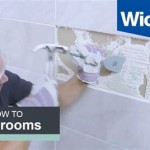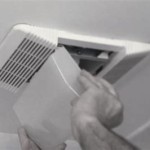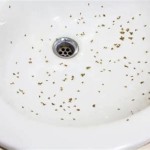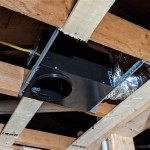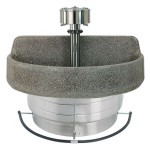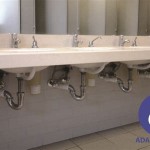Can I Paint Over Mold In My Bathroom Floor? Understanding the Risks and Proper Remediation
Discovering mold growth in a bathroom, particularly on the floor, is a common concern for homeowners. The warm, humid environment bathrooms provide creates an ideal breeding ground for various types of mold. While the immediate reaction may be to simply cover it up with paint, understanding the potential consequences of this approach is crucial. Painting over mold without addressing the underlying issue is generally not recommended and can, in fact, exacerbate the problem.
This article delves into the reasons why painting over mold is a problematic solution, outlining the potential risks and providing a comprehensive guide to proper mold remediation on bathroom floors. It emphasizes the importance of addressing the source of the moisture that fuels mold growth to prevent recurrence.
The Problem with Simply Painting Over Mold
Painting over mold might seem like a quick and easy fix, but it only addresses the visible surface issue. The mold spores remain alive beneath the paint layer, continuing to grow and spread. The paint does not kill the mold; it merely conceals it. This hidden growth can lead to several significant problems:
First, the mold continues to damage the underlying material. Mold feeds on organic materials, such as wood, drywall, and even some types of adhesives commonly used in bathroom floor installations. By trapping the mold beneath a layer of paint, one is essentially providing it with a dark, humid environment perfect for continued consumption of the flooring structure. Over time, this can lead to structural weakness and costly repairs.
Second, the paint layer is likely to blister, peel, or crack as the mold grows beneath it. This not only ruins the aesthetic appearance of the bathroom floor but also releases mold spores into the air. These spores can then spread to other areas of the bathroom and even the entire house, contaminating other surfaces and increasing the risk of health problems.
Third, painting over mold can mask a more serious underlying issue, such as a leaking pipe or inadequate ventilation. By simply covering up the problem, one delays the necessary repairs that would address the source of the moisture and prevent future mold growth. This can lead to more extensive damage and higher repair costs in the long run.
Health Risks Associated with Mold Exposure
Beyond the structural damage, mold exposure poses significant health risks, particularly for individuals with allergies, asthma, or compromised immune systems. Mold spores are microscopic particles that can become airborne and inhaled. When inhaled, they can trigger a range of allergic reactions, including:
- Sneezing
- Runny nose
- Coughing
- Watery eyes
- Skin rash
In more severe cases, mold exposure can lead to asthma attacks, respiratory infections, and other serious health problems. Certain types of mold, such as Stachybotrys chartarum (black mold), produce mycotoxins, which are toxic substances that can cause even more severe health effects, including neurological problems and even death in rare cases. While not all molds are toxic, identifying the specific type of mold is difficult without professional testing. Therefore, it's always prudent to treat any mold growth with caution and prioritize remediation.
Prolonged exposure to mold can also weaken the immune system, making individuals more susceptible to other illnesses. Children, the elderly, and individuals with pre-existing health conditions are particularly vulnerable to the health effects of mold exposure.
Proper Mold Remediation on Bathroom Floors: A Step-by-Step Guide
The proper approach to dealing with mold on a bathroom floor involves identifying and addressing the source of the moisture, removing the mold, and preventing future growth. The following steps outline a comprehensive mold remediation process:
1. Identify and Correct the Moisture Source: Before addressing the mold itself, it is crucial to identify and fix the underlying cause of the moisture. This could be a leaking pipe, a dripping faucet, inadequate ventilation, or condensation due to poor insulation. Thoroughly inspect the bathroom floor, walls, and ceiling for any signs of water damage. If a leak is suspected, engage the services of a qualified plumber to locate and repair the source. Ensure the bathroom is adequately ventilated by using the exhaust fan during and after showers and baths. Consider installing a dehumidifier to further reduce humidity levels.
2. Safety Precautions: Before beginning the mold removal process, it is essential to take necessary safety precautions to protect oneself from mold exposure. Wear appropriate personal protective equipment (PPE), including:
- A respirator or N-95 mask to prevent inhaling mold spores.
- Gloves to protect skin from contact with mold.
- Eye protection, such as goggles, to prevent mold spores from entering the eyes.
- Old clothes that can be laundered immediately after the remediation process.
Furthermore, isolate the affected area by sealing off the bathroom door with plastic sheeting and tape to prevent mold spores from spreading to other parts of the house.
3. Mold Removal: The method of mold removal depends on the severity of the infestation and the type of flooring material. For small areas of mold growth on non-porous surfaces such as tile, a solution of diluted bleach (1 part bleach to 10 parts water) can be used. Apply the solution to the affected area, scrub thoroughly with a brush, and rinse with clean water. Ensure adequate ventilation during this process, as bleach fumes can be irritating. For porous surfaces such as wood or carpet, bleach is not recommended, as it can damage the material and may not effectively kill the mold at the root. In these cases, a specialized mold removal product may be necessary. Follow the manufacturer's instructions carefully. In cases of extensive mold growth, it may be necessary to remove and replace the affected flooring material. This is particularly important if the mold has penetrated deep into the subfloor.
4. Cleaning and Disinfection: After removing the visible mold, thoroughly clean and disinfect the affected area and surrounding surfaces. This helps to kill any remaining mold spores and prevent future growth. Use a HEPA vacuum cleaner to remove any loose mold spores and debris. Wipe down all surfaces with a disinfectant cleaner. Pay particular attention to areas where mold may have spread, such as walls, ceilings, and fixtures.
5. Drying: Thoroughly drying the affected area is crucial to prevent future mold growth. Use fans and dehumidifiers to dry the floor and surrounding surfaces as quickly as possible. Ensure adequate ventilation to remove moisture from the air. Monitor the area for any signs of recurring mold growth.
6. Professional Mold Remediation: In cases of extensive mold growth, particularly if it covers an area larger than 10 square feet, it is recommended to enlist the services of a professional mold remediation company. Professional remediators have the expertise, equipment, and training to safely and effectively remove mold and address the underlying moisture source. They can also conduct mold testing to identify the type of mold present and ensure that the remediation process is successful.
Selecting the Right Paint After Mold Remediation
Once the mold remediation process is complete and the affected area is thoroughly dry, selecting the right type of paint is crucial to prevent future mold growth. Consider using a mold-resistant paint that contains mildewcides. These paints are specifically formulated to inhibit the growth of mold and mildew on painted surfaces. Before painting, prime the surface with a mold-resistant primer to further enhance protection. Ensure that the paint and primer are compatible with the flooring material and are suitable for use in a humid environment like a bathroom.
Proper surface preparation is also essential for ensuring that the paint adheres properly and provides optimal protection against mold growth. Clean the surface thoroughly to remove any dirt, dust, or debris. Repair any cracks or holes in the surface. Allow the surface to dry completely before applying the primer and paint. Apply multiple thin coats of paint rather than one thick coat, allowing each coat to dry completely before applying the next. This will ensure a more durable and long-lasting finish.
Preventing Future Mold Growth in the Bathroom
Preventing mold growth in the bathroom requires a proactive approach that focuses on controlling moisture levels and maintaining a clean and dry environment. Here are some key preventative measures:
- Ventilation: Ensure adequate ventilation in the bathroom by using the exhaust fan during and after showers and baths. Consider leaving the bathroom door open to allow air to circulate.
- Humidity Control: Monitor humidity levels in the bathroom and use a dehumidifier to reduce excessive moisture.
- Leak Prevention: Regularly inspect plumbing fixtures, pipes, and seals for leaks. Repair any leaks promptly.
- Cleaning: Clean the bathroom regularly to remove dirt, soap scum, and other organic matter that can serve as a food source for mold.
- Drying: After showers and baths, wipe down wet surfaces, such as shower walls and floors, to remove excess moisture.
- Proper Sealing: Ensure that all seams and joints in the bathroom are properly sealed with caulk to prevent water from penetrating behind walls and floors.
By taking these preventative measures, one can significantly reduce the risk of mold growth in the bathroom and maintain a healthy and safe environment.
The Importance of Professional Assessment
While this article provides a comprehensive guide to mold remediation on bathroom floors, it is essential to recognize the limitations of DIY approaches. In cases of severe mold infestations, underlying structural damage, or health concerns, it is always advisable to seek professional assessment and remediation services. A qualified mold inspector can accurately assess the extent of the mold damage, identify the type of mold present, and recommend the most appropriate remediation strategy. A professional remediation company can safely and effectively remove the mold, address the underlying moisture source, and ensure that the affected area is properly cleaned and disinfected. Furthermore, professional mold testing can confirm that the remediation process has been successful and that the indoor air quality is safe.

What Do About Black Mold In The Bathroom Bob Vila

Kill Bathroom Mould Without Bleach Electrodry Blogs

Bathroom Mold How To Identify And Get Rid Of In Environix

Mouldy Walls Here S What Not To Do Safeguard Europe
Black Mold On Plywood Subfloor Diy Home Improvement Forum

Bathroom Mold How To Identify And Get Rid Of In Environix

Ways To Prevent Mold In Bathrooms Forbes Home

Cleaning Mrs Hinch Fans Share Tips To Remove Ceiling Mould Express Co

Signs Of Mold In A House Experts Reveal How To Be Sure

Black Mold Pictures Causes And Signs Ultimate Guide
Related Posts
